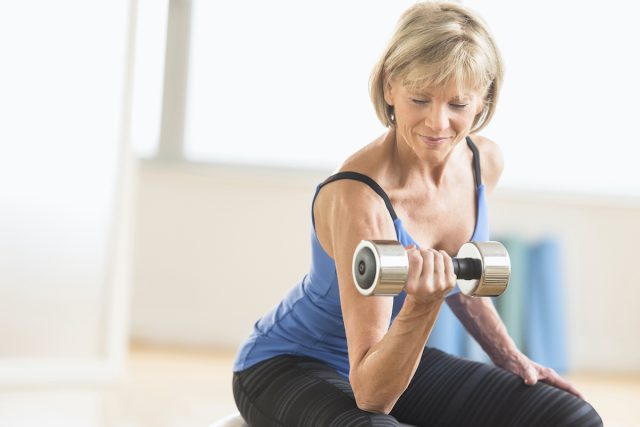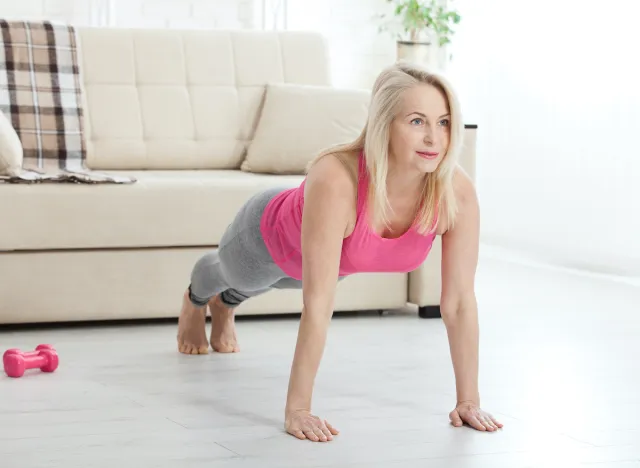5 Exercise Habits That Are Secretly Aging Your Body After 40 (and What to Do Instead)

Staying active as you age is essential for leading a strong, fulfilling, and independent life. But if you’re over 40 and diligent with your fitness routine, there may be a few sneaky workout habits doing more harm than good. That’s why we spoke with Dr. Kira Capozzolo, doctor of chiropractic and co-owner at Twin Waves Wellness Center, who reveals the exercise habits that could secretly be aging your body after 40—and what to do instead.
“Depending on what your workout routine is like, you could be accelerating wear and tear in your 40s and beyond,” Dr. Capozzolo cautions.
Below are some of the common habits Dr. Capozzolo sees people doing and how to fix them.
You’re pushing through pain.

Dr. Capozzolo often sees clients dismiss muscle strain or joint discomfort, chalking them up to simply getting older. But she warns that neither is something to ignore, explaining, “Pain is your body’s way of waving a red flag.”
Rather than pushing through pain, tweak your movements, incorporate more mobility work into your sessions, and address the root cause of the issue, whether it may be inflammation, posture, or incorrect movement patterns.
“Gentle chiropractic care can also help realign your body so you’re not compensating in ways that lead to injury,” Dr. Capozzolo notes.
You’re only performing high-impact cardio.

Whether you’re looking to kick up the calorie burn or maintain your fitness, beware of overdoing high-impact cardio.
“Running or HIIT five days a week might torch calories—but it also batters your joints over time, especially if you’re not recovering properly,” Dr. Capozzolo explains. “Instead, swap in low-impact cardio like swimming, cycling, or walking with intervals. You’ll still challenge your cardiovascular system without the joint stress.”
You’re skipping strength training.

Consider strength training your fountain of youth; it shouldn’t be overlooked or pushed to the back-burner!
“Too many people over 40 focus only on cardio and neglect resistance training. But that speeds up muscle loss (sarcopenia) and weakens your bones,” says Dr. Capozzolo “Instead, prioritize strength training two to three times a week, focusing on functional movements that support balance, posture, and everyday mobility.”
You’re not giving your body ample recovery time.

Carving out ample time for rest and recovery is just as important as your workouts themselves.
“Your body needs more time to recover as you age, especially if you’re dealing with inflammation, joint stiffness, or stress,” Dr. Capozzolo tells us. “Build rest days into your week. Stretch, foam roll, hydrate, sleep well, and consider bodywork like chiropractic or massage to support recovery.”
You’re not including variety in your workouts.

Not only can doing the same old workout become mundane, but it can stall your progress. According to Dale Santiago, Rumble boxing trainer and national talent manager, following the same routine for years can also lead to lack of neuromuscular challenge and overuse injuries.
“Instead, mix up your routine! Incorporate balance work, flexibility training, and new movement patterns to challenge your body in different ways and keep it adaptable,” Dr. Capozzolo recommends.